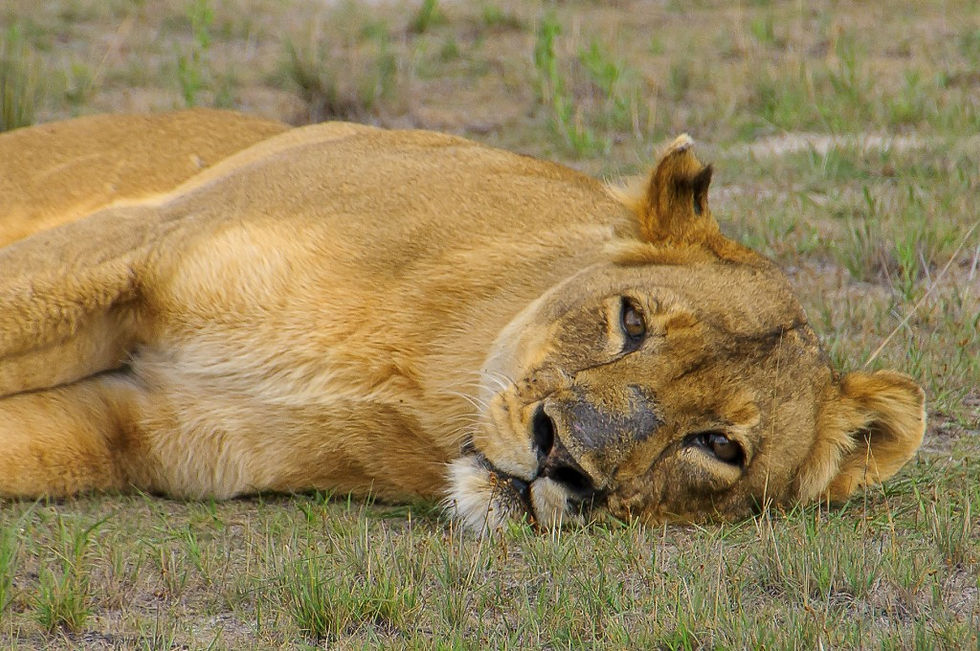"BELLOWING OF THE BEASTS"
- Footsteps of Livingstone

- Jan 27, 2021
- 2 min read
Updated: Mar 24, 2021
‘A Liuwa Plains Story’
‘Far from the Madding Crowd’, is how I’d describe Liuwa Plains National Park. It holds a mystical air about it. We were lucky to visit the area in December 2019 and stay at King Lewanika Camp. The camp is tastefully furnished with an amazing view over the plains. Liuwa has the second largest wildebeest migration in Africa and from your deck, you can hear the bellowing of the beasts, followed by the barking and braying of zebra. Game drives offer you an insight into the surroundings, where you have a 360degree vista of a wide open tree-less landscape.

Apart from the stunning views on offer in this magical place. You will see an abundance of plains-game and you will most likely encounter the ever-inquisitive hyaena, cheetah and the late Lady Liuwa’s Lion pride and offspring.

Photo credits: Jon Walker, taken of Lady Liuwa in November 2012. Published on LionVoice.org, April 22, 2013.
The cat that wondered the plains alone for nine years. National Geographic created a documentary called Lady Liuwa: The Last Lioness. A must watch! The story emphasizes the tale of both survival and perseverance. After years of loneliness, Lady was reunited with her same species, thanks to the dedication of The African Parks Network who took control of Liuwa Plains in 2004. The introduced lions from neighboring parks allowed for a lady to integrate with a new generation of lion to walk beside her. Even though she was unable to breed herself, cubs were born amongst the pride, introducing a successful gene pool into the area. Her passing in 2017 left a mark on all of us who never managed to see her face to face, however, her legacy wears on.

Bird life is amazing – we were fortunate enough to see white-bellied bustards and rosy-throated long claws (a lifer for the team). The numbers of storks and cranes wading along the edges of the waterholes were astounding. Here you can see both Wattled and Crowned Cranes feeding in harmony together, another first for us.
Anyone who has a passion for reptiles, we saw more snakes in this park, than I’ve encountered anywhere else. A beautiful Anchieta’s cobra (also known as an Angolan cobra) and a large African Rock Python.
The flight in and out of Luiwa is a scenic activity in itself, flying low level over the huge Barotse floodplain, where the Zambezi River, in flood can be 30km wide. The marshy grassland creates a layer of green pasture that floods the horizon, a true spectacular scene. Imagine David Livingstone wandering through this floodplain on foot, 170 years ago, on his journey up the Zambezi to Luanda.
The park is closed from 1st July to 15th October due to the floods and the best time to see the Wildebeest Migration is December January, and again in May/June. Other times of the year your guide will take you on a day trip up to the north of the park, where you’ll encounter the Migration. Get in touch of one of our safari specialists from Footsteps of Livingstone for more information on Liuwa.
See Footsteps of Livingstone's "Explorers Collection Itinerary" - In the Footsteps of Chief Sekeletu











Comments